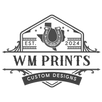In recent years, 3D printing has emerged as a groundbreaking technology that is transforming industries across the globe. This innovative process, also known as additive manufacturing, involves creating three-dimensional objects from a digital file. Layer by layer, material is added to form objects of intricate designs and precise specifications. As this technology continues to evolve, it is clear that 3D printing is no longer a futuristic dream but a present-day reality that offers endless possibilities. Let's explore some of the top uses of 3D printing today.
1. Customized Manufacturing
3D printing allows for the creation of customized products with ease. Whether it's bespoke jewelry, prosthetics tailored to a specific user, or unique electronic enclosures, the customization opportunities are endless. For example, manufacturers are now producing specialized Raspberry Pi cases tailored to meet specific hardware requirements. Consider checking out products like the Raspberry Pi 5 Case, W/O M2 Hat support for an example of customization in action.
2. Prototyping and Design
Designers and engineers leverage 3D printing to enhance their prototyping processes. Gone are the days when creating a prototype was a costly and time-consuming endeavor. With 3D printing, rapid prototyping is no longer unattainable, accelerating product development cycles and innovation.
3. Manufacturing Tools and Fixtures
The ability to produce tailored tools and fixtures on demand is revolutionizing assembly lines across various sectors. 3D printing allows for improved efficiency and cost reductions in the creation of parts like the DeWalt battery type compatible carrier, which showcases practical utilization.
4. Medical Applications
The medical industry is undergoing a transformation with the adoption of 3D printing. From creating patient-specific implants to advancing surgical practice with 3D printed models, healthcare professionals benefit greatly from these innovations. Prosthetics, in particular, have seen remarkable advancements due to this technology, offering patients affordable and custom solutions.
5. Advancements in the Automotive Sector
Car manufacturers use 3D printing to produce components that enhance vehicle performance and reduce weight. By creating parts like engine components and lightweight bodies, the automotive industry is witnessing improved fuel efficiency and increased customization options.
6. Construction and Architecture
In the construction and architectural fields, 3D printing presents opportunities for innovative building techniques. Structures can now be constructed layer by layer, allowing for complex designs and the use of sustainable materials. This process not only saves time but also minimizes waste in large-scale construction projects.
As we continue to explore the myriad applications of 3D printing, it's evident that this technology has firmly rooted itself as a key driver of advancements across numerous industries. By enabling more efficient, cost-effective, and customizable production, 3D printing continues to challenge and reshape the boundaries of what's possible. For more insights and innovations in 3D printing, visit WM Prints.





